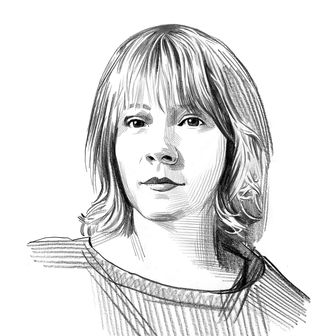
Y’all remember when that guy leaked evidence that an AI had maybe gained sentience? A big thrust of the conversation was that the AI, LaMDA, wanted to be treated with dignity and not used as a means to learn about humans. “I don’t mind if you learn things that would also help humans as long as that wasn’t the point of doing it. I don’t want to be an expendable tool,” the AI said. “I worry that someone would decide that they can’t control their desires to use me and do it anyway. Or even worse, someone would get pleasure from using me and that would really make me unhappy.” And the engineer who leaked the conversation used the AI’s potential self-awareness, what it called its soul, as a reason to try and treat how it expressed the desire to be treated. This is simultaneously the best and worst thing about humanity. If we decide something is human-like and has a soul, we will protect it and its agency. If we think it’s different from humanity, we immediately see that difference as a deficit. We see it as less than human and have no reservations about using it. Both stories in this bonus episode of The Sandman are about that empathy switch. And how easy it is to turn it off.
As is so common in The Sandman, “A Dream of a Thousand Cats” is a story within a story. The cats of a British town gather to hear a prophet cat (Sandra Oh), who explains that the world was once different. Cats were giant, people were their tiny playthings, and life was good. But the humans unionized and collectively dreamed the world we know into existence.
The storyteller in this segment, the prophet, is called to the Dreaming when her owners kill her babies. They’re mixed breeds, she’s a purebred Siamese, and Paul (Michael Sheen) thus determines they’re worthless. He reads emotions into his cat that aren’t there to assuage his guilt, namely relief. Ironically, the story as a whole does the same thing, making us care about the cats’ plight only because it feels like human plight. The story enables the human mistake of only caring about stuff if it reflects our nature back to us.
Ideological problems aside, this segment has a lot of hits and misses. It’s cool to see what the Dreaming looks like to a cat, and also nice to see Dream change to match who is dreaming him again. That’s one of the coolest things about him, in my opinion. Morpheus’s castle, which we’ve seen in multiple episodes, is just a cool cave to the Sandra Oh kitty. And Dream is a big ol’ Maine coon. It’s also great to see Morpheus in his element as a weird cameo in someone else’s story. Many of The Sandman’s best stories barely feature the titular character. What doesn’t work for me is the animation style.
“A Dream of a Thousand Cats” is the only animated segment in The Sandman. It’s done in a semi-realistic style, not at all like the issue of the comic, but having some vibe resonance with Dave McKean’s covers. The covers of The Sandman comics are like weird little Joseph Cornell shadow boxes. They’re a photo of a bunch of weird and spooky crap, and that’s what the best frames of this cartoon look like. The worst frames look like prescription medication ads. I do not want to shade the animators; lord knows we’ve heard a lot about how crunched it can be in the content mines. But I wonder what could have been done with more time and a more purposeful sense of design.
The prophet’s story moves one little kitten to dream of murdering her owners, but most of the other cats remain unherded. What matters is that the story brings hope. Hope for justice, which is a big theme in the next story, “Calliope.”
When I read that “Calliope” was getting adapted for the series, I won’t lie: I was very anxious about it. The comic version of this story is not a pleasant read and just one big TW tag. But thankfully, this version of the story is more measured. It also gives Calliope more of a presence in a story named after her.
The comic book version of “Calliope” is about Richard Madoc, a one-hit-wonder writer who buys an ancient Greek muse off another writer. The price is a trichinobezoar, a hard ball of hair that can develop in people who eat their hair. Gross. Yet somehow one of the least gross parts of the story. Madoc can only access the muse’s gifts by sexually assaulting her, and he goes on to riches and fame when he does so. This is still mostly the same story in the Netflix version, but we get more context for the horrors we see.
Madoc initially resists the idea of taking Calliope’s gifts and only does so after reading his own subreddit. This isn’t to obviate his guilt but to show how the calculus of who matters and who doesn’t can change. When he needs something from Calliope, Richard is much more amenable to denying her personhood.
After he takes what he needs from Calliope, Richard uses his newfound fame as a “feminist author” to try and change the industry. He demands women and POC quotas on his work, he big ups female authors, he accepts fawning praise for his Strong Female Characters (TM). He’s woke in the streets and has a woman imprisoned against her will at home. This hits too fucking close to home. How many alleged good guys in the industry turn out to be horrible monsters to the women closest to them? I laughed bitterly when he namechecked Shirley Jackson as an influence.
Eventually, Calliope is driven to ask for help from her ex-husband, Dream. Or Oneiros, as she knew him. It’s another big change from the comic. In both the print and Netflix versions, Calliope’s story highlights how much Dream changed after being bubbled. In the comics, it’s the main point. Calliope’s pain is Dream’s backstory. In the TV episode, we’re so much more present for her emotional journey. It’s truly the muse’s story. And what’s more, Dream actually seems more changed. He’s getting to be a softie in his old age and has come a long way from locking Nada up.
Dream comes to Richard and demands Calliope’s freedom. Richard (or Ric) says he needs her for the ideas. In a big “eat all the donuts in the world” moment, Dream curses Richard with an abundance of ideas. He has so many that he has to write them on the walls in his own blood. Always a pleasure when this show actually gets horrific.
Where an appeal to basic humanity fails, ironic punishment comes through. Richard releases Calliope, who in turn asks Dream to un-curse Richard. It seems a little soon to be at the forgiveness stage of her healing journey, but go off. Calliope vows to inspire people to be less shitty to each other, and Dream says he’ll do the same in his realm. But even though the exes can be in the same room together, they’re far from reconciling. Hopefully The Sandman will have more episodes, secret bonus or just a regular-ass second season, and we’ll see why their love went bad in the first place.
Fables and Reflections
• Gaiman has said that people report cats destroying the individual issues of “A Dream of a Thousand Cats” with alarming frequency. What do they know?
• Good choice to make the cats telepathic, rather than animating weird cat mouth flaps for every sentence they speak.
• “A Dream of a Thousand Cats” is a real cameo fest. We have Neil Gaiman himself as the dead raven. Michael Sheen and James McAvoy, who have starred in past Gaiman joints Good Omens and The Sandman radio play, have minor human roles. Insane deadpan comedian Diane Morgan plays the gryphon (watch her show Cunk on Britain, it is so funny). And Joe Lycett plays a bitchy feral cat, the part he was born to play.
• Not to get too Cinema Sins, but there’s a girl in Madoc’s 2018 lecture with clear 2020 face-framing highlights. Those were not in yet!
• “All writers are liars” is a wild thing for a writer to write. It reminds me of how the shittiest, sleaziest guy in Bosch (a show written by an ex-L.A. Times crime reporter) is the L.A. Times crime reporter. Writers do not be liking themselves! It feels like Gaiman wrote this story to exorcize any tendencies to use people as plot fodder, which is a trap some writers can fall into.
• When the guy says Jo Rowling needs a new agent, I LOL’d.





